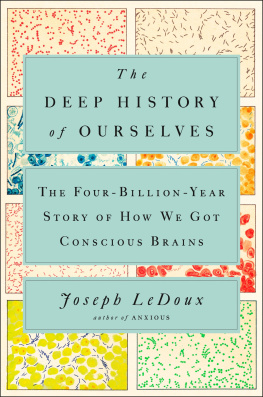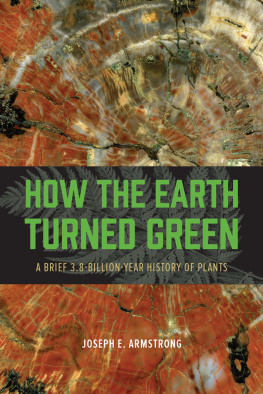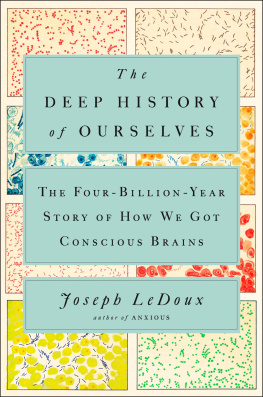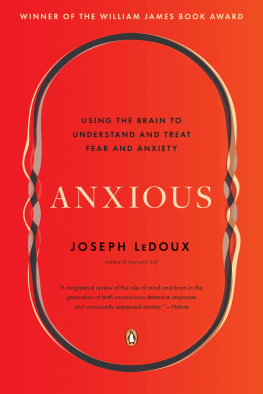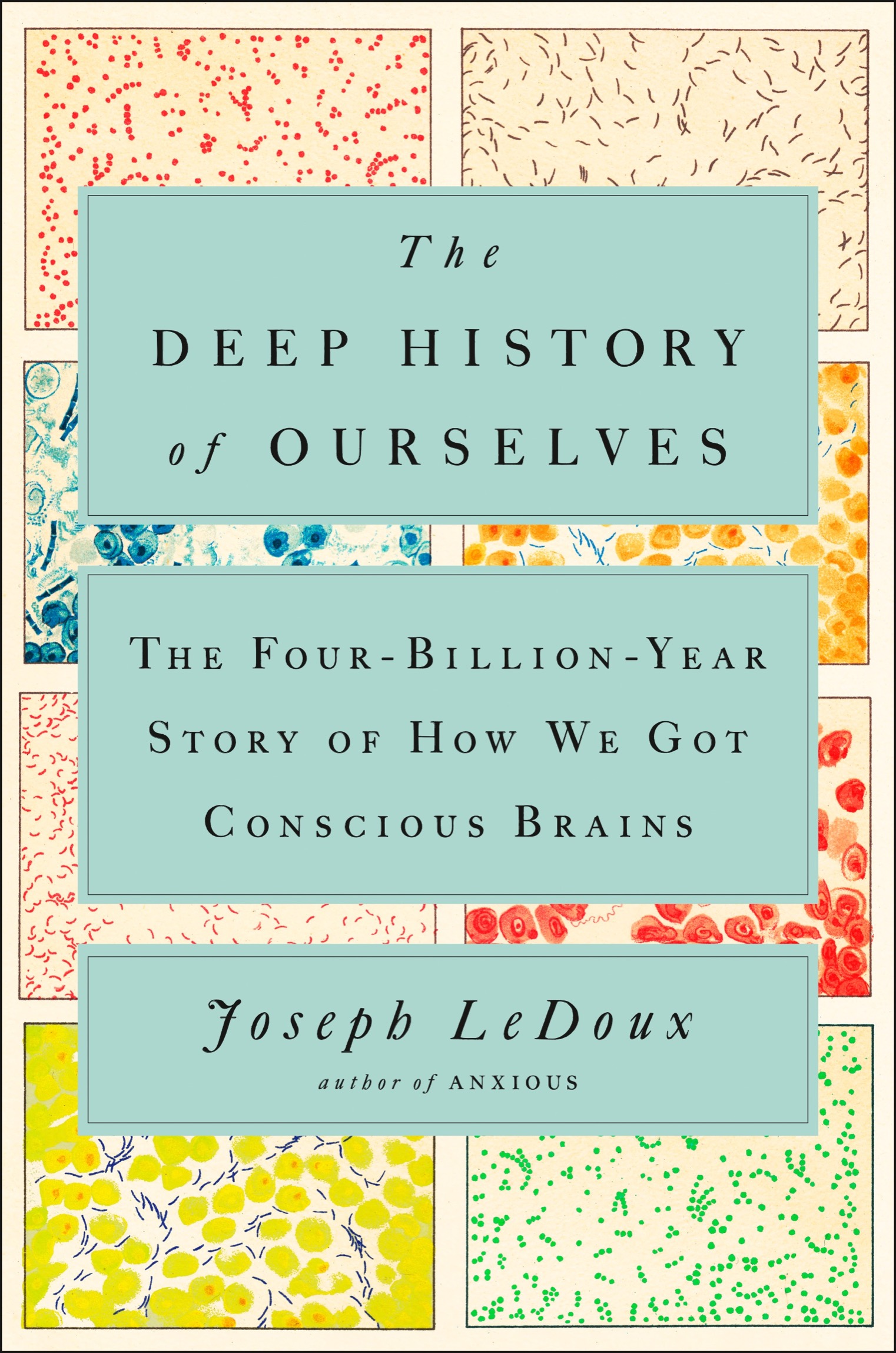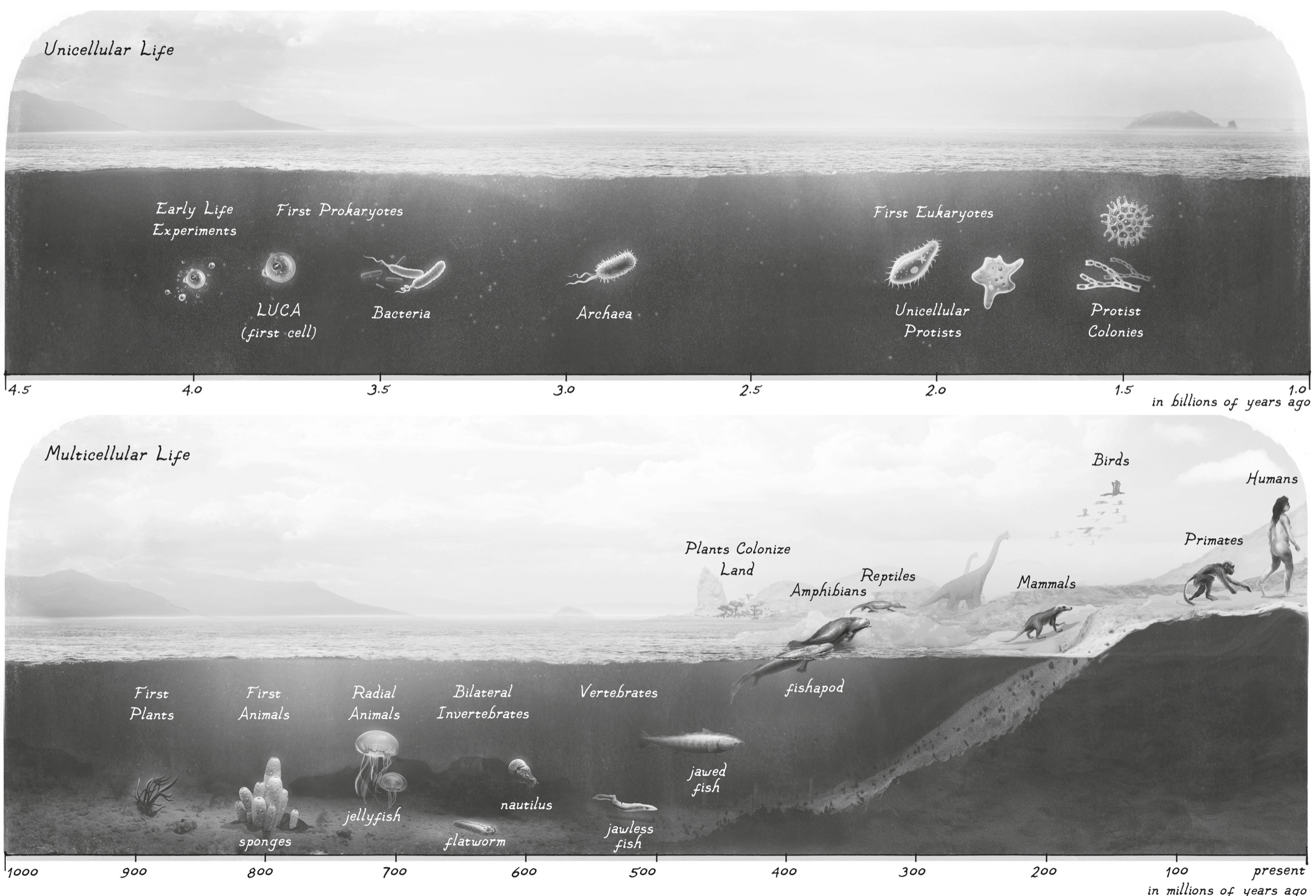Frontispiece:Some Key Events in the History of Life
(for more details on the Timeline of Life see the table in the appendix)
VIKING
An imprint of Penguin Random House LLC
penguinrandomhouse.com
Copyright 2019 by Joseph LeDoux
Penguin supports copyright. Copyright fuels creativity, encourages diverse voices, promotes free speech, and creates a vibrant culture. Thank you for buying an authorized edition of this book and for complying with copyright laws by not reproducing, scanning, or distributing any part of it in any form without permission. You are supporting writers and allowing Penguin to continue to publish books for every reader.
constitutes an extension of this copyright page.
LIBRARY OF CONGRESS CA TALOGING-IN-PUBLICAT ION DATA
Names: LeDoux, Joseph E., author. | Sorrentino, Caio, illustrator.
Title: The deep history of ourselves : the four-billion-year story of how we got conscious brains / Joseph LeDoux ; illustrations by Caio Sorrentino.
Description: New York City : Viking, [2019] | Includes bibliographical references and index. |
Identifiers: LCCN 2019011172 (print) | LCCN 2019012921 (ebook) | ISBN 9780735223844 (ebook) | ISBN 9780735223837 (hardcover)
Subjects: LCSH: Consciousness. | BrainEvolution. | Nervous systemEvolution.
Classification: LCC QP411 (ebook) | LCC QP411 .L43 2019 (print) | DDC 612.8/23dc23
LC record available at https://lccn.loc.gov/2019011172
Cover design: Alison Forner
Cover image: DigitalVision Vectors / Getty Images
Version_1
To Mike Gazzaniga, my mentor and friend
CONTENTS
PREFACE
The Deep History of Ourselves is about the evolution of behavior. Not just the behavior of humans or other mammals or even other animals. It is about how behavior began as soon as living entities, organisms, came into being. These single-cell microbes, ancestors of the bacteria we share the planet with, had to do many of the same things we do to surviveavoid harm, obtain nutrients, maintain fluids and temperature, and reproduce. Deep History follows how subsequent organisms have used behavior to meet these same general survival requirements in their lives. But similarities only make sense in terms of differences, and a key goal of the book is to provide an account of the things most different about us: language, culture, our capacities of thinking and reasoning, and our ability to reflect upon who we are. These are new, but have deep roots that extend to the beginning of life.
Shortly before starting Deep History, I read E. O. Wilsons The Meaning of Human Existence. I was enthralled with the very compact single idea nature of his chapters, and decided to do the same. The chapters of Deep History are thus formulated as very brief thoughts or meditations, stand-alone vignettes that cover a limited topic. I aimed to keep them to about fifteen hundred to two thousand words, and succeeded in most cases. I also wanted to follow Wilsons lead and write a short book, but did not do so well on that front.
The chapters are grouped thematically, so that if you want to learn specifically about how life began, or bacterial behavior, or how sexual reproduction emerged, or how life progressed from single to multicellular existence, or how nervous systems evolved, or about the key role of sponges and jellyfish in human evolution, or how cognition or emotion evolved, or what we know about consciousness and the brain, you can just read the relevant sections that interest you. But for those who read from start to finish, Deep History will take you on an ascent of the tree of life in such a way as to connect the survival capacities of ancient microbes to our own unique capacities to survive and thrive by thinking and feeling, to contemplate our personal past and future, and the future of our kind.
This is my fourth single-authored book. I learned something important in writing the first one. The best way to figure out what you really knowand dont knowabout your field is to write about it. Deep History, though, was a little different. I knew from day one I had a lot of research to do if I was going to write about the history of life. Much of the first part of the book is thus written with me serving more as a scientific journalist than as an expert. Consequently, I sought the help of experts when I felt I was completely out of my depth (hopefully, I did enough of this). When I got to the parts I knew about, I got to have my usual aha experiences about how much I had to figure out, and then also reached out to colleagues.
Thanks very much to all of you who consulted, including Tyler Volk (prebiotic chemistry and early life), Nick Lane (origins of life), Karl Niklas (origins of multicellular life and the role of export- and alignment-of-fitness), Sarah Barfield (germline segregation), Ralph Greenspan and Takeo Katsuki (jellyfish behavior), Iaki Ruiz-Trillo (protozoan ancestors of multicellular organisms), Linda Holland (early origins of bilateral animals; divergence of protostomes and deuterostomes; divergence of chordates from other deuterostomes, and vertebrates from other chordates), Maja Adamska (sponge physiology and behavior), Sten Grillner (early vertebrate nervous systems), Eric Nestler (epigenetics and behavior), Betsy Murray (evolution of perception and memory systems), Charan Ranganath (perception and memory), Cecilia Heyes and Thomas Suddendorf (ruling out nonconscious explanations before claiming consciousness in humans or animals), Nathaniel Daw (cognitive deliberation), Marian Dawkins (anthropomorphism), Liz Romanski, Helen Barbas, Roozbeh Kiani, and Todd Preuss (prefrontal cortex), Hakwan Lau and Steve Fleming (metacognition and consciousness), Karl Friston (predictive coding), Richard Brown (philosophy of mind), David Rosenthal (higher-order thought theory of consciousness), and Christophe Menant (self, consciousness, and evil).
I wanted Deep History to have a visual as well as a verbal narrative. When I mentioned this to an artist friend, Heide Fasnacht, she told me that she had a talented student who might be worth considering. Caio da Silva Sorrentinos work impressed me, and once he generated some samples, based on preliminary text that I had written, I was sold. Caio developed the perfect visual concept for the art, one reminiscent of biological illustrations from the late nineteenth century, including hand-drawn lettering. Caio is indeed a talented illustrator, and I have enjoyed working with him. Deep History greatly benefited from his vision.
When writing my last book, Anxious, my wife, Nancy Princenthal, was busy with her book on the artist Agnes Martin, which went on to win the PEN America Award for Biography. We basically started and finished around the same time, and our marriage survived the horse race. It also survived our in-tandem efforts being completed nowDeep History for me and a book on sexual violence in the art of the 1970s for her. I could not have gotten mine done quite the same without her moral support and also expert editing of parts I was struggling with. Our son, Milo LeDoux, a classicist turned capital-markets attorney, contributed key millennial insights from time to time over dinner. For example, when I mentioned something about human behavior often being nonconsciously controlled, he quipped, Its sort of like being behind the wheel of a Tesla. He gets a footnote or two in the book.

